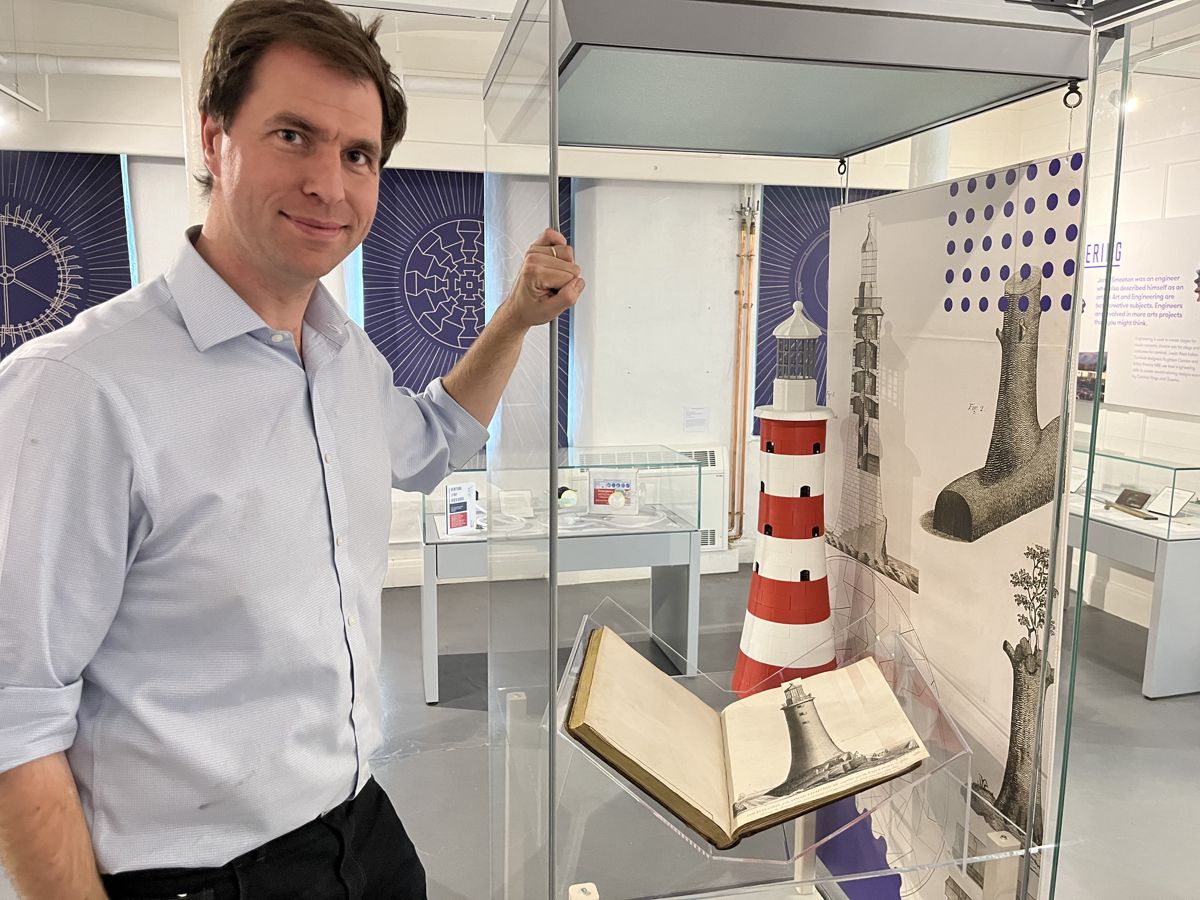Leeds Industrial Museum shines a spotlight on John Smeaton, the pioneering engineer known for the Eddystone Lighthouse, with a stunning model crafted by Mark Calvert on display in the exhibition Engineery: Building Better Futures. Celebrating Smeaton’s 300th birthday, this tribute showcases both his original designs and modern interpretations, weaving a narrative of innovation that connects past and present in the heart of Leeds.
What is the legacy of John Smeaton and how is it being celebrated?
John Smeaton, an iconic engineer, is celebrated for his designs like the Eddystone Lighthouse, exemplified by a detailed model at Leeds Industrial Museum. The museum’s exhibition, Engineery: Building Better Futures, honors the 300th anniversary of his birth, showcasing his pioneering work and inspiring future innovation. For more on Smeaton’s legacy, visit smeaton300.co.uk.
A Tribute to a Trailblazer in Engineering
Leeds Industrial Museum is currently hosting an exhibition that vividly brings to life the legacy of John Smeaton, the celebrated engineer whose designs have stood the test of time. The museum’s latest display includes an intricate model of the Eddystone Lighthouse, a testament to Smeaton’s groundbreaking work. Civil Engineer Mark Calvert, with a dedicated interest in railway systems, meticulously designed and 3D printed this model. His creation stands next to Smeaton’s own writings – a first edition book that unfolds the detailed plans of the original Eddystone Lighthouse.
The lighthouse model, with its distinctive red and white coloration, features scores of interlocking bricks. These represent the granite blocks and dovetail joints of the original structure. “Smeaton’s lighthouse designs have always been fascinating,” says Mark, a former chair of the Yorkshire branch of the Institution of Civil Engineers. The level of detail in the engineering plans is remarkable, mirroring the interlocking nature of the granite blocks designed to withstand the relentless sea.
Born in Whitkirk, Leeds, in 1724, Smeaton was a self-taught visionary. He was charged with constructing a lighthouse to navigate the hazardous Eddystone Rocks, located near Devon’s coast. Drawing inspiration from the sturdy form of an oak tree and the kerbstones of London’s streets, Smeaton erected a lighthouse standing 59 feet high, which would be lit for the first time on October 16, 1759. This feat of engineering not only marked a pivotal moment in design but also stood as a beacon of human ingenuity against natural forces.
Leeds Industrial Museum: Bridging Past and Present
The book of designs, taking Smeaton an astonishing 35 years to complete, is on loan from Leeds Central Library. This treasured manuscript, dedicated to King George III, is a tangible piece of history that complements Mark’s modern-day model. Visitors can expect to be immersed in a narrative that bridges generations of engineering excellence.
Engineery: Building Better Futures is the name of the exhibition that tells the story of civil engineering’s transformative impact on the world. This collaborative effort between the Leeds Museums and Galleries and the Smeaton 300 program by Foxglove, a local arts organization, marks the 300th anniversary of Smeaton’s birth. Mark’s collaboration with Foxglove positions him as an expert, contributing insights into the program.
Councillor Salma Arif, the executive member for adult social care, active lifestyles, and culture at Leeds City Council, expressed admiration for the enduring influence of Smeaton’s work: “It’s incredible to see Smeaton’s designs are still encouraging creativity and innovation in Leeds centuries after he was born.” It is fitting, she notes, that today’s innovators, inspired by Smeaton, present their creations in the city that he called home.
Celebrating Smeaton’s Bicentennial
The festival of Smeaton’s 300th birthday is a city-wide celebration, with the Engineery exhibition marking just one focal point of remembrance and homage to Smeaton’s achievements. For more information on the Smeaton 300 program, individuals are encouraged to visit The Project – Smeaton300. Those looking to delve deeper into the Engineery exhibition at Leeds Industrial Museum can find details at Engineery – Leeds Museums & Galleries.
This event not only honors the historical figures of our city but also serves as an inspiration for future generations. By combining historical artifacts with modern recreations, the exhibition seeks to spark a dialogue between the past and the present. It aims to underscore the continuum of innovation that has long been a hallmark of Leeds’ cultural and intellectual landscape.
Through these exhibits, the city of Leeds remains a place where the spirit of creation and the celebration of heritage coalesce, continuing to foster an environment where history is not only preserved but is also a living part of the fabric of the community.
- The Leeds Industrial Museum is showcasing a detailed model of the Eddystone Lighthouse, celebrating the legacy of engineer John Smeaton for his 300th birthday.
- The exhibition, titled Engineery: Building Better Futures, highlights Smeaton’s groundbreaking work and its influence on modern engineering.
- Civil engineer Mark Calvert designed and 3D printed the lighthouse model, which includes interlocking bricks that mimic the original structure’s granite blocks.
- A first edition of Smeaton’s designs, dedicated to King George III and taking 35 years to complete, is on loan from Leeds Central Library and complements the exhibit.
- The Smeaton 300 program aims to inspire future generations by bridging historical artifacts with modern interpretations of engineering excellence in Leeds.
